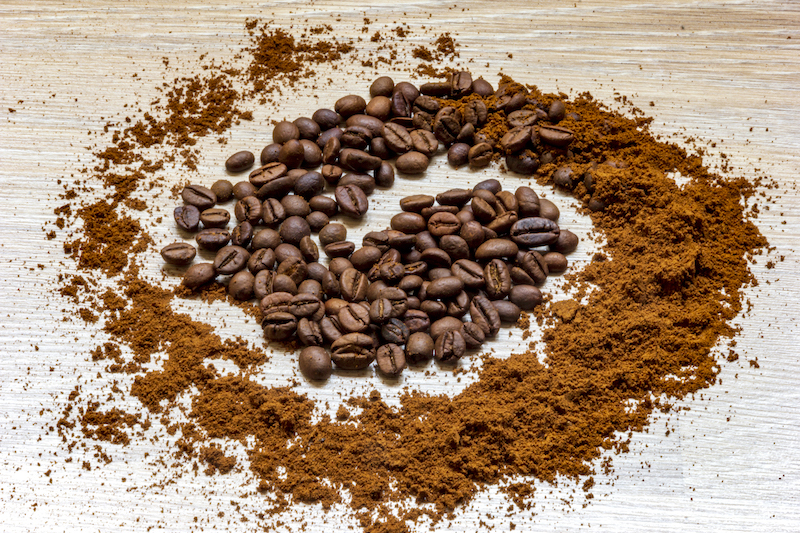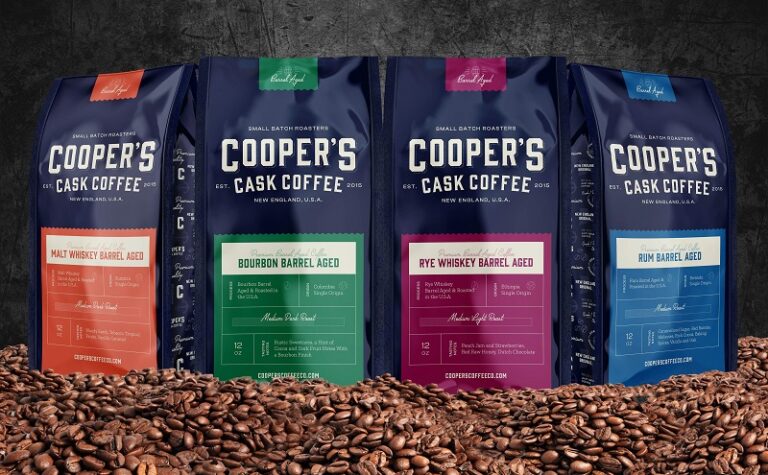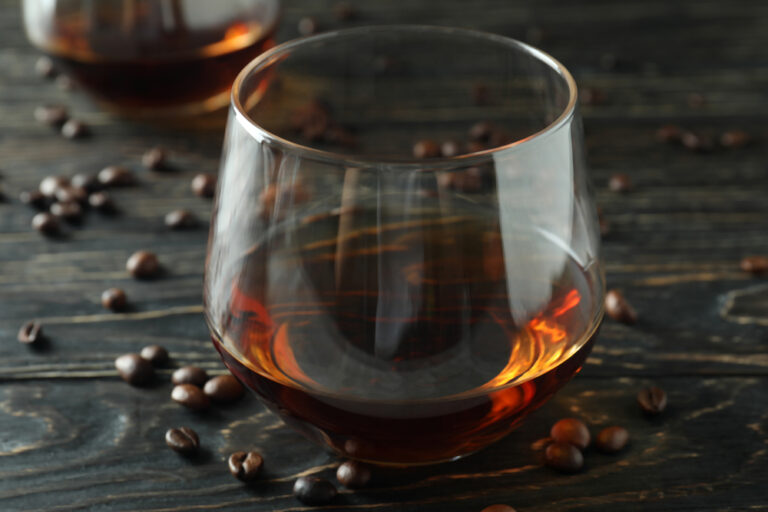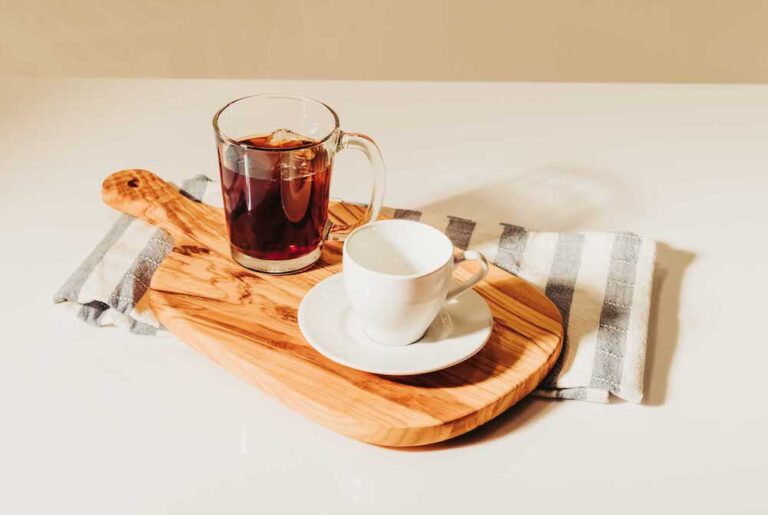As you may know by now, Cooper’s Cask Coffee uses only single origin, grade 1 specialty coffee beans. But they aren’t brew-ready when we first get a hold of them.
So you source ‘em, add a little heat, and stuff ‘em in a bag, right?
Let’s just say there’s a little more to it than that… Just kidding, we’re always happy to go into detail.
When it comes to roasting coffee, we’re no magicians. Wizards, more like it. We don’t just expect you to ooh and ahh at the spectacular finale and give you only a smirk when asked how we did it.
Think of us instead as lifelong students of the mysteries and magic of coffee. Our master coffee roasters at Cooper’s Cask Coffee are forever refining and perfecting the craft of turning the best raw beans into rave-worthy roasts.
We Knew the Beans Before They Were Famous
All of your favorite coffees from Cooper’s were once pretty similar to the naked eye and nose. From our smooth and sweet Guatemala Cold Brew Coffee to our Organic Sumatra Dark Roast, they don’t look and smell all that different when they first arrive at our small-batch coffee roastery.
While not identical, all of our raw beans are a fairly pale, milky green in color, and they smell a bit like hay or grass. Being grade 1 beans, they’re also virtually free of defects—as close to perfect as possible. Being both single origin and grade 1 makes them some of the highest-quality specialty beans in the world.
While they may look and smell pretty similar, these beans are packed full of secrets and hidden potential. The flavor and aroma profile of every single origin coffee roast we sell is nuanced and unique to the region it was grown.
Roasting coffee beans, however, does not create these flavors, subtleties, and nuances. The best coffee always starts with the best beans. But even the best beans don’t guarantee the best flavors.
It takes skill, practice, knowhow, and no small amount of coffee-roasting wizardry to unlock and enhance the greatness within great beans.
Scorched Possibilities: How Most Coffee Gets Roasted
About 99% of coffee roasters use drum roasters to prepare their beans for consumption. Most drum roasters use conduction (hot surfaces) and, sometimes, convection (hot air) to get the job done. The conduction is where things get messy.
Roasting coffee beans with a drum roaster involves spinning the beans in a heated barrel until done—or overdone. The heat from the barrel is transferred to the beans through conduction, but conduction tends to heat the beans unevenly.
Some drum roasters have a fan to improve consistency, but the beans are still likely to be more roasted or burnt where they were in contact with the heated surface of the barrel.
Roasters who mix lower-grade beans from multiple sources will often favor very dark roasts, over-roasting the beans until their individual characteristics become less prominent and the overall flavor profile becomes more uniform (dark and generic).
How We Roast Potential to Perfection
Our expert roasters at Cooper’s Cask Coffee use the best coffee roasters on the market. The ultra-high-tech Loring coffee roasting machines use convection (hot airflow) to heat our beans with unmatched consistency and adjustable precision.
But Loring coffee roasters can’t automatically turn raw Kenyan beans into our signature Medium Dark Roast Coffee on their own. We love the Loring roasters because of their customizability. A coffee roasting machine is, after all, a tool.
Our coffee nerds at Cooper’s use the best tools to their full potential to bring out the full potential of the best beans.
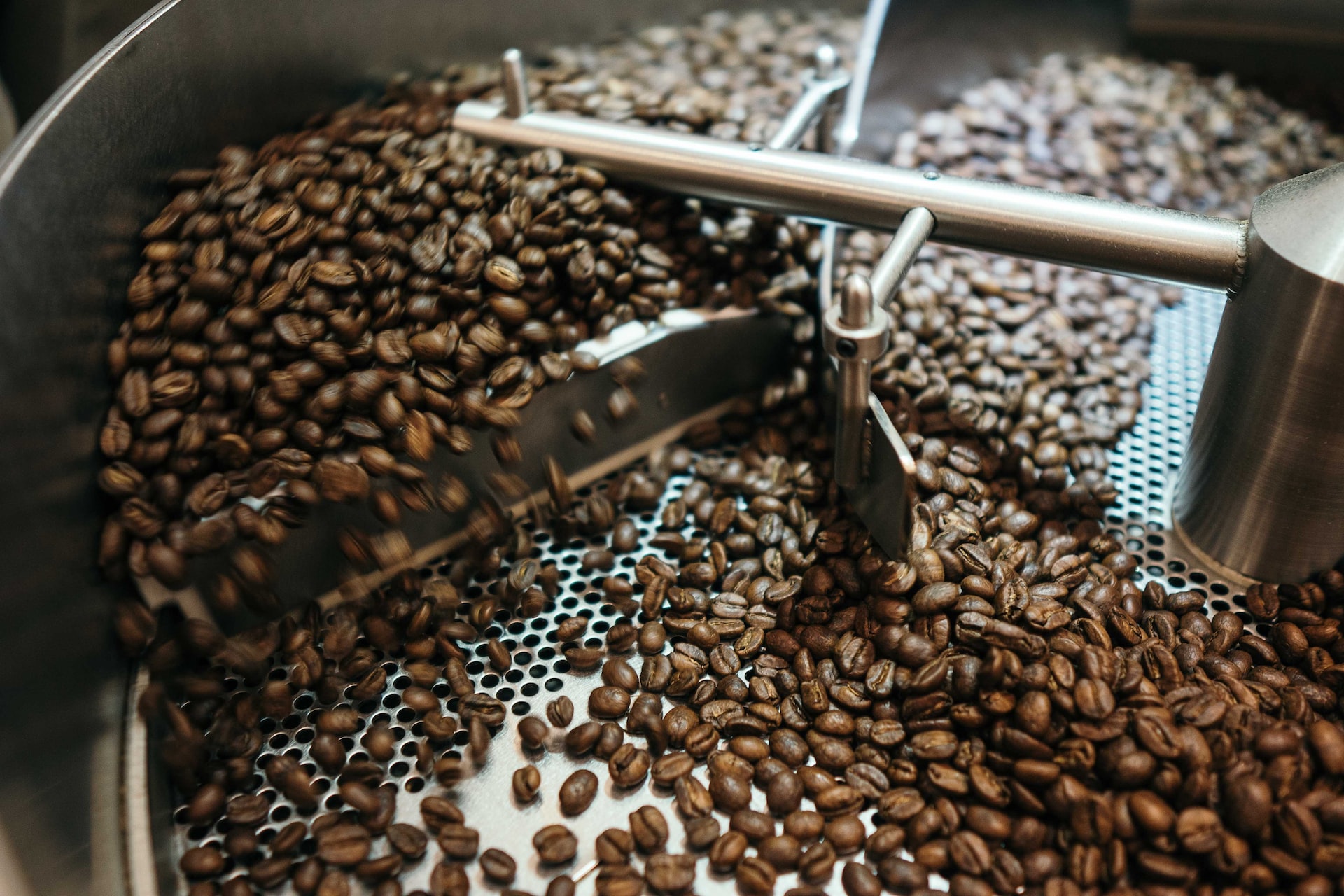
The Roasting Process
A dark roast doesn’t go straight from green to dark brown. As the beans roast, the green slowly yellows and then becomes brown. The longer the beans are roasted, the darker the shade of brown.
And it’s not just the color that changes. In general, the acidity also tends to drop as the roast becomes darker and the bitterness increases.
By bitterness, we don’t mean the kind of jaw-achingly bitter taste of unswallowed aspirin. Bitterness in coffee, when properly balanced, is like the bitterness in dark chocolate—a bitterness that complements and doesn’t overwhelm the roast’s complex undertones or natural sweetness.
Speaking of sweetness, the sweetness of coffees like our Rwanda Medium Roast Coffee isn’t just an illusion. The roasting process causes the natural sugars in the raw beans to caramelize.
One of the biggest tasks and challenges of roasting coffee beans is bringing out and balancing the perfect amount of sweetness in the beans. And this looks different for each of our single origin coffees.
Roasting Levels
Light
Light roasts, like Cooper’s Ethiopia Bold Light Roast Coffee, tend to be lighter-bodied, meaning they have thinner texture in the mouth. They also typically feature bright acidity and crisp fruitiness.
It’s called a light roast because of its lighter treatment (aka less roasting time). Compared to other roast levels, light roast coffee beans also tend to be a lighter shade of brown.
Medium
Medium roast coffees, like our Rwanda Medium Roast, are known for their well-rounded flavors, balancing sweetness, acidity, and bitterness. By this point in the roasting process, you get quite a bit of caramelized sugars that meld perfectly with the overall smoothness of the brew.
By the time you get to a medium roast level, the acidity tends to be lower and the bitterness has started to pick up. This, paired with a higher quantity of caramelized sugars, is why medium roasts are often used to bring out notes of caramel and chocolate.
Dark
Last but not least, we arrive at a dark roast by roasting coffee beans to dark brown, sometimes almost black. While all roast levels take enormous skill and precision to get right, it doesn’t take much to overdo a dark roast.
Some specialty coffee roasters steer clear of dark roasts altogether for fear of obliterating the unique origin character of the coffee beans. Some are much better suited for lighter roasts, but this couldn’t be less true for our Organic Sumatra Dark Roast.
We carefully roast this full-bodied coffee to bring out its finest characteristics, including notes of woody earth, dark chocolate, cherry, and tobacco.
Many commodity coffee roasters favor ultra dark roasts for their low acidity and ability to (when overdone) “mask” the inconsistent flavors of low-quality beans from any number of sources. By essentially turning coffee beans into charcoal briquettes, these roasters wind up with bitter, unexceptional coffee usually purchased to “get the job done.”
Contrary to what you may have been told, dark roasts don’t necessarily have more caffeine than medium or light roasts. In fact, they technically have a tiny bit less, since a small amount of caffeine is lost during the roasting process. Caffeine content depends more on the variety of raw beans used than on the amount of heat they’re exposed to.
The In-Betweens
Roast levels are more of a spectrum than fixed points. And it’s good to keep in mind that the best roasts are the roasts that bring out the best in the beans. Not every bean is suitable for every level of roasting.
For this reason, our expert coffee roasters don’t just stick with 3 roast levels. Some beans need in-betweens. Take, for instance, our Brazil Medium Dark Roast Espresso, our Tanzania Peaberry Medium Light Roast Coffee, and our Kenya AA Medium Dark Roast Coffee.
Roast profiles are not interchangeable for all beans. It’s taken us a lot of experimentation and cupping (taste testing) to finally arrive at the perfect roast levels for our specialty coffee beans.
Can You Roast Your Own Coffee at Home?
From one coffee nerd to another, you can (technically) roast your own beans at home. We respect and admire your curiosity and adventurous spirit. However, it may not be worth your time and money.
First of all, don’t believe (or trust) anyone who tells you that a conventional oven is suitable for roasting coffee beans. Ovens are notorious for inconsistent heating, and prolonged contact with a cooking tray will cause the underside to burn.
When roasting coffee beans, you have to make sure the beans are constantly moving so that they don’t burn. For that reason, some brave souls choose to roast their beans using a pan on the stovetop.
While getting good results may be possible using the stovetop method, there are a few downsides. One of the biggest downsides is inconsistency. Pan-roasting coffee beans to perfection is a challenge for the same reason some professional coffee roasters struggle to get consistent results with drum roasters—exposing the beans to a superheated surface can easily lead to burned beans and irregular heating.
A consistent roast is key to a great cup of coffee. That’s one of the leading reasons we use an air roaster. Roasting coffee beans at home is a lot of work, and the reward for your work can be minimal. For one, it’s nearly impossible to roast a decent quantity of coffee beans at once. But another reason is that it’s far too easy to turn even the best raw beans into something no coffee lover deserves to drink.
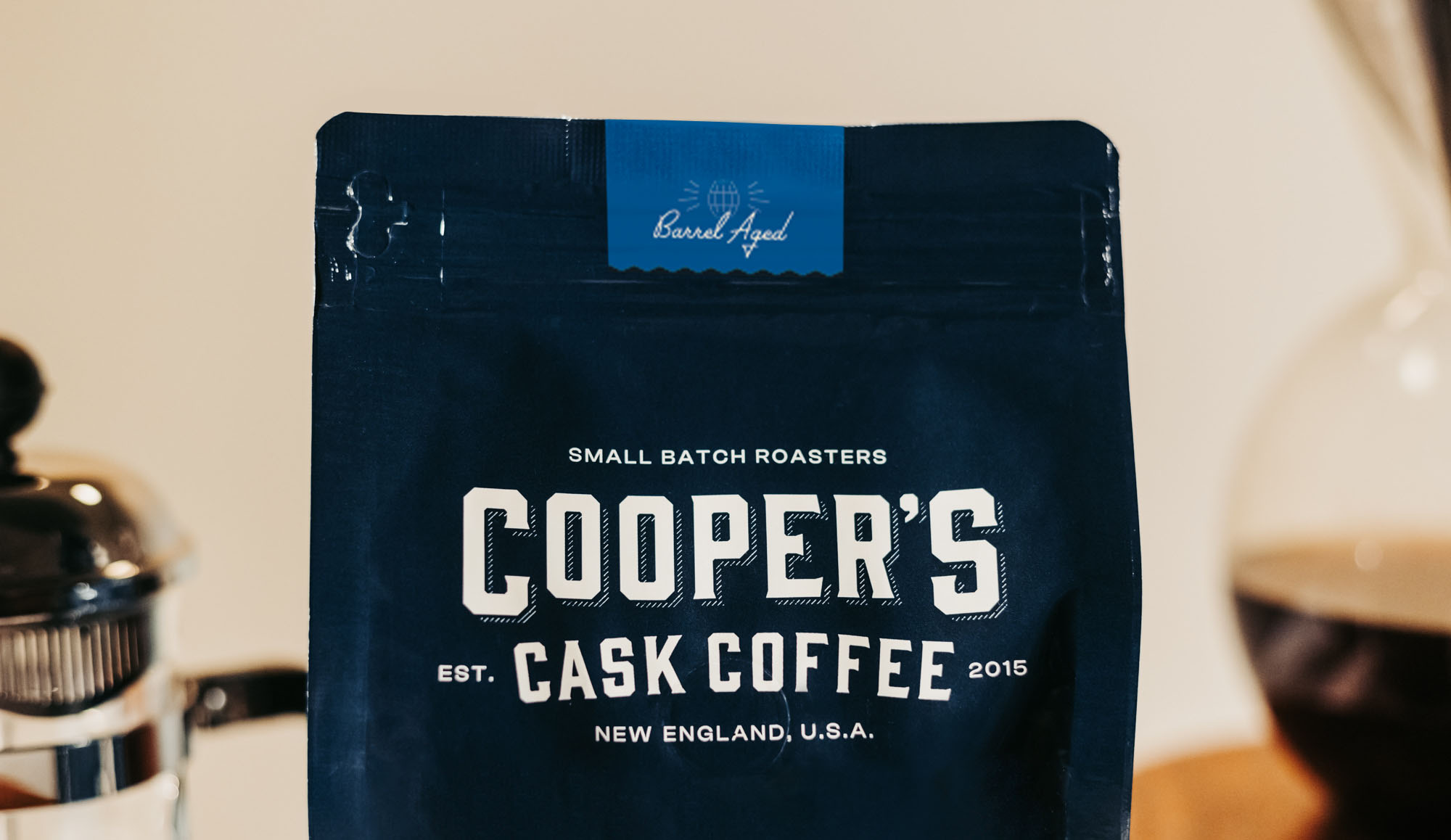
What’s With the Hole in Your Coffee Bag?
Unless you’ve been buying your coffee in a can or pods, you’re probably no stranger to the little bullseye on your coffee bag. But have you ever stopped to think about why it’s there and how it doesn’t ruin your precious specialty beans?
In case you don’t know what we’re talking about, most coffee bags feature a small hole, usually at the center of a raised circle. You may have even heard it referred to as the “smelling hole.” But this hole isn’t just for sneaking a quick sniff.
While there is a tiny opening on the outside of the packaging, it’s not really a hole in the bag—not in the typical sense. It’s actually the opening to a special one-way valve. This valve lets out CO2 without letting in oxygen or moisture.
Were it not for these valves, the bag of single origin specialty coffee you ordered would swell up like a popcorn bag. It could even tear or burst on its way to you.
But what, you might ask, is carbon dioxide doing in my coffee bag in the first place? Coffee beans naturally release CO2 as a result of the roasting process. Some coffee roasters that don’t use vented bags may have allowed the beans to de-gas in the open before packaging.
Not Cooper’s Cask Coffee. The problem with letting the beans rest or de-gas before packaging is that they’re being exposed to oxygen that whole time. In other words, they’re no longer fresh, and they haven’t even been packaged yet.
As much as you may enjoy oxygen, it’s not something you want to share with your beans.
Oxygen is the enemy of freshness. One of them, at any rate. Roasted coffee also needs to be protected from moisture, heat, and sunlight.
By roasting coffee beans fresh in small batches and packaging them fresh, you get to experience our gourmet coffees to their fullest. Those little valves (along with opaque, airtight packaging) help keep your coffee fresh as it leaves the hands of our expert coffee roasters and makes its way to yours.
Perfection Fresh to Order
We’re always happy to talk about what sets Cooper’s Cask Coffee apart, and so are our customers. Our products have over 7,000 4- and 5-star reviews on Amazon, and it’s no accident.
By roasting coffee beans (the best single origin beans) fresh to order in small batches, our coffees pretty much speak for themselves.
For more information about our coffees and roasts, check out our selection of single origin coffee, barrel aged coffee, and the brewing gear to bring them to life in your favorite cup.
If we sound confident in our skillfully roasted coffee, it’s because we absolutely are. We know what we’ve got, and we’re excited to introduce you. If you don’t like what you get, no worries. When you order Cooper’s Cask Coffee, you get a 100% money-back guarantee.
Sign up for our email list and get 10% off your first order!
